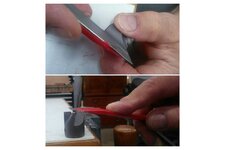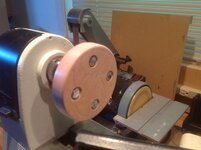Warren White
Member
I am looking for some help on the part of making a pen that I have not enjoyed since the very first one. OK, I have only made about 10 pens, so my experience is quite limited. But it still is my least favorite part of the process.
I purchased a pen mill at a well known supplier (not named because it isn't important). I cut the blank just a little longer than the brass tube, perhaps 1/32", and mount the pen mill on my lathe's #2 Morse taper. With the lathe off, put the blank on the mill. Turn the lathe on.
Screech, screech, whine. Check. More to do. Screech, screech, whine. Check. More to do. Repeat until the cows come home. Finally it is done.
Today, I even waited to do the screeching until I had turned the blank down to nearly the size of the bushing. It still screeched.
But isn't there a better way? I have a limited number of tools, including a Delta 5" disk sander which seems a bit too imprecise. I saw a great video in the Library section which included a jig to ensure a flat end, but it was done on a larger sander. I am not sure I could make something like that work on my little bitty sander, but I am certainly open to other options.
Thank you! I know there are folks out there who can come to my aid.
I purchased a pen mill at a well known supplier (not named because it isn't important). I cut the blank just a little longer than the brass tube, perhaps 1/32", and mount the pen mill on my lathe's #2 Morse taper. With the lathe off, put the blank on the mill. Turn the lathe on.
Screech, screech, whine. Check. More to do. Screech, screech, whine. Check. More to do. Repeat until the cows come home. Finally it is done.
Today, I even waited to do the screeching until I had turned the blank down to nearly the size of the bushing. It still screeched.
But isn't there a better way? I have a limited number of tools, including a Delta 5" disk sander which seems a bit too imprecise. I saw a great video in the Library section which included a jig to ensure a flat end, but it was done on a larger sander. I am not sure I could make something like that work on my little bitty sander, but I am certainly open to other options.
Thank you! I know there are folks out there who can come to my aid.


